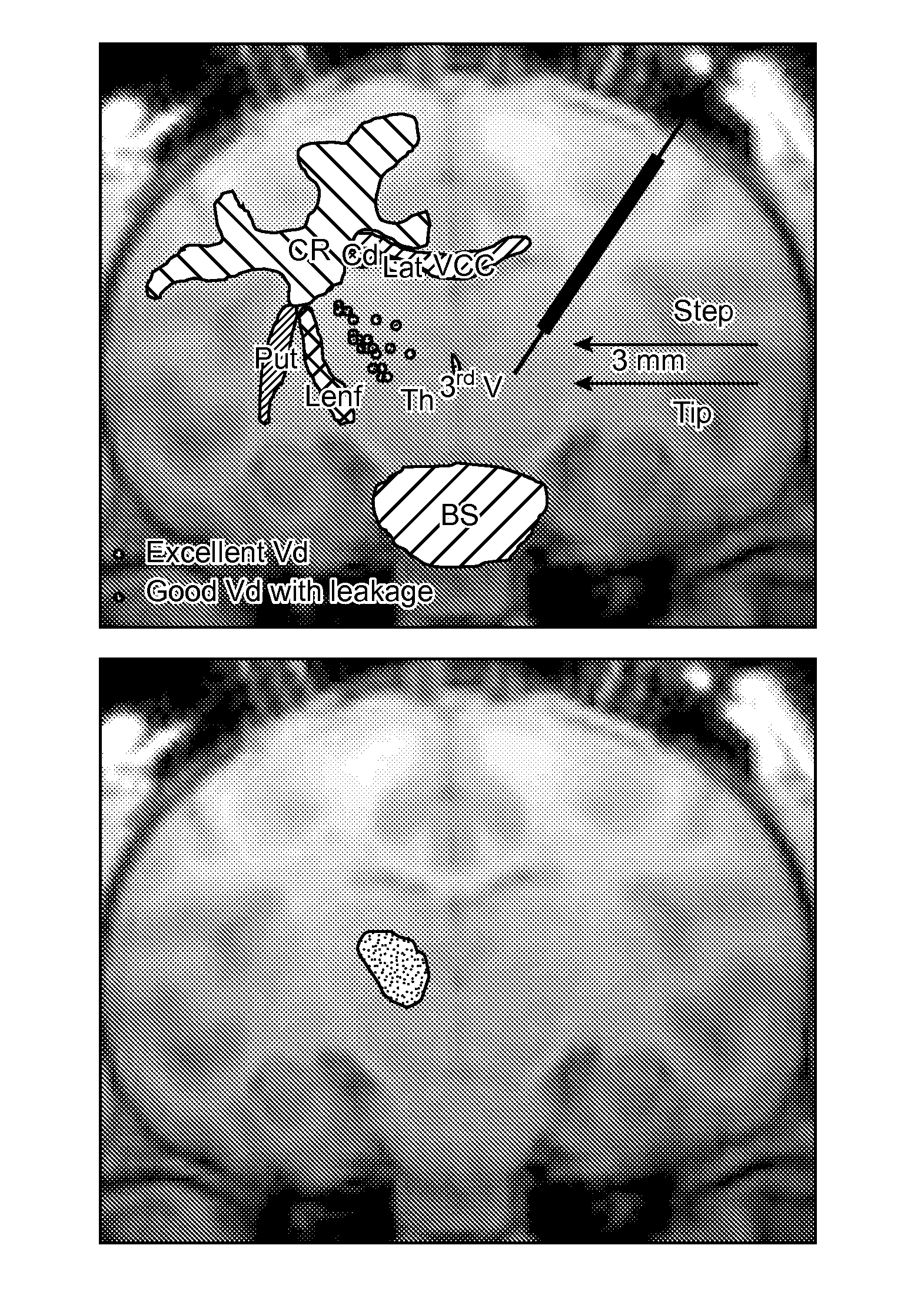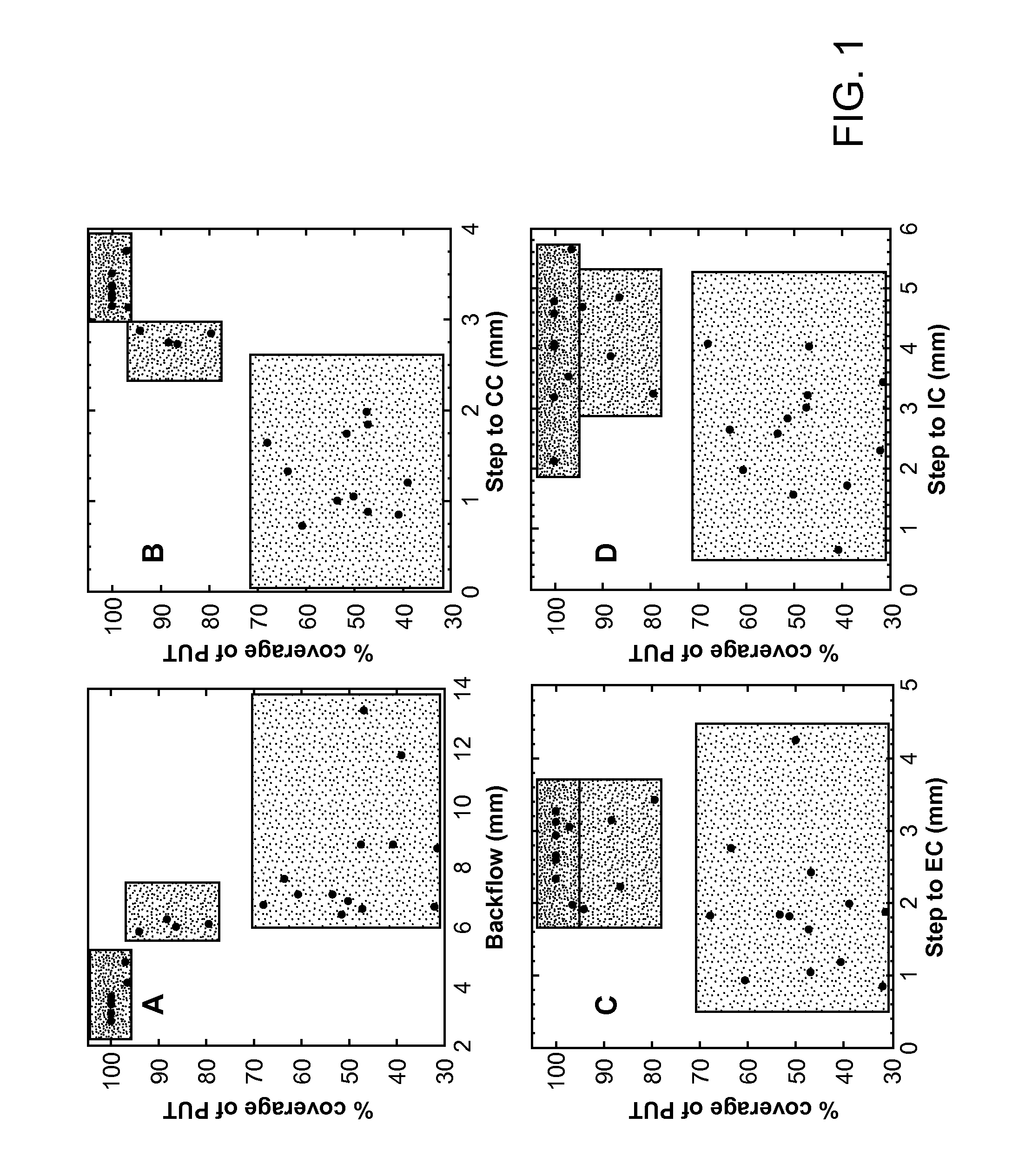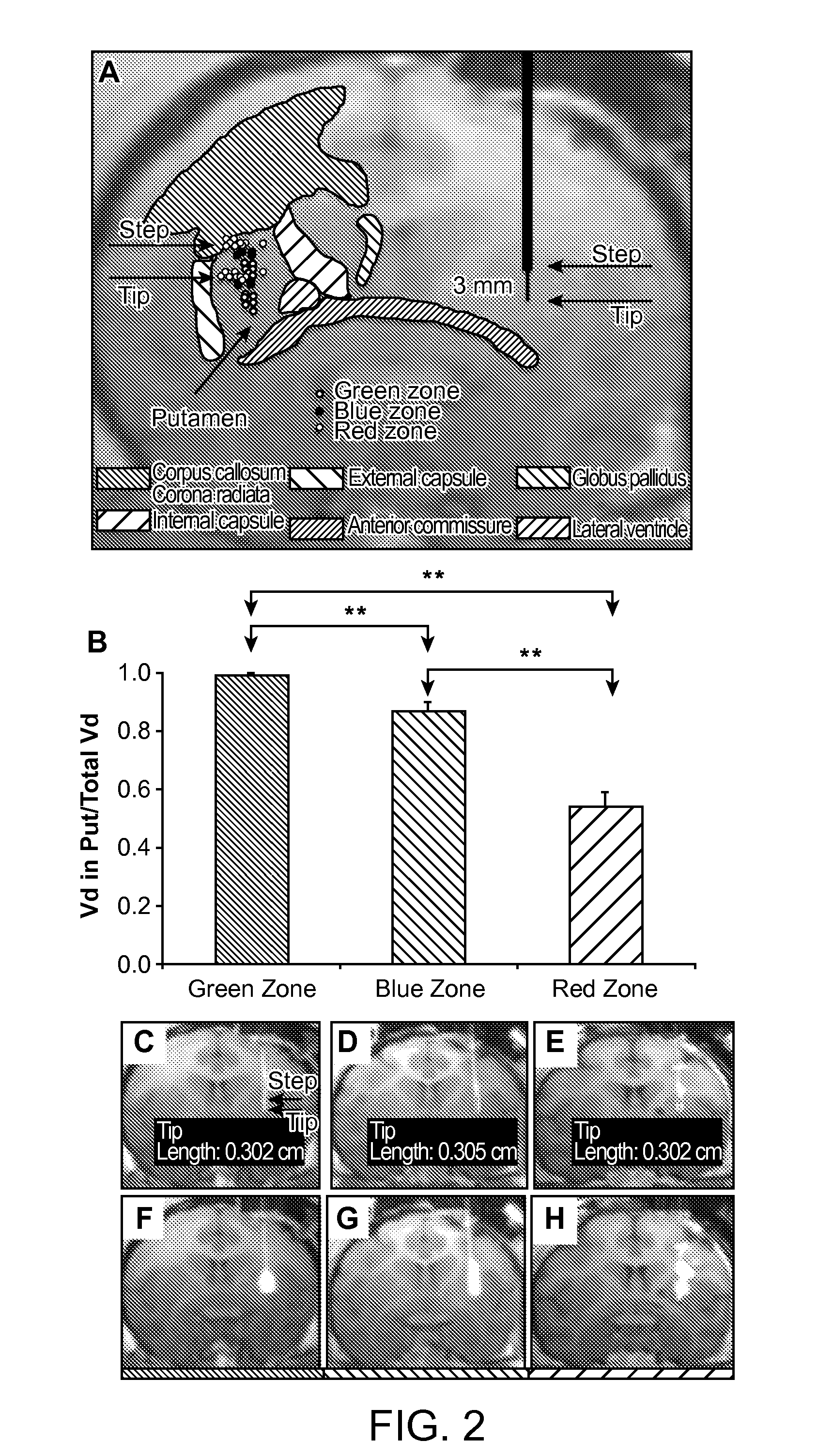Optimized Placement of Cannula for Delivery of Therapeutics to the Brain
a technology for brain and cannula, applied in the direction of instruments, catheters, applications, etc., can solve the problems of slow tissue clearance, non-homogeneous distribution of most delivered agents, etc., and achieve the effect of improving the delivery of therapeutic agents and effective delivery of therapeutics to the brain
- Summary
- Abstract
- Description
- Claims
- Application Information
AI Technical Summary
Benefits of technology
Problems solved by technology
Method used
Image
Examples
example 1
Optimal Region of the Putamen for Image-Guided Convection-Enhanced Delivery of Therapeutics in Human and Non-Human Primates
Materials and Methods
[0097]Experimental subjects and study design. Thirteen normal adult NHP, including 11 Rhesus macaques (7 male and 4 female, aged from 8 to 18 years; mean age 11.9 years, weight 4-9.4 kg) and 2 Cynomolgus monkeys (one male and one female, age 7 years for both; weight 5 and 7 kg respectively) were the subjects in the present study. Experimentation was performed according to the National Institutes of Health guidelines and to the protocols approved by the Institutional Animal Care and Use Committee at the University of California San Francisco (San Francisco, Calif.) and at Valley Biosystems (Sacramento, Calif.). Thirteen animals received a total of 25 intracranial infusion of GDL (2 mM) or free Gadoteridol (2 mM, Prohance; Bracco Diagnostics, Princeton, N.J.) into the putamen. Infusions were performed by previously established CED techniques f...
example 2
Real-Time Visualization and Characterization of Gadoteridol Delivery into Thalamus and Brain Stem in Non-Human Primates by Magnetic Resonance Imaging
[0123]In this study, six NHP received 22 infusions into thalamus and brainstem. Real-time MR images of NHP brain were obtained from each RCD to evaluate the distribution of Gd and to measure the distance from cannula step in the thalamus or brainstem to midline, lateral border and cannula entry point to targeted structure, respectively, based on the location of the cannula step.
Experimental Subjects and Study Design
[0124]Six normal adult NHP, including 4 Cynomolgus monkeys (2 male and 2 female, age from 7 to 8 years; mean age 8.2 years, weight 5-12.8 kg) and 2 Rhesus macaques (1 male, age 10 years, weight 12.2 kg; 1 female, age 8 years, weight 6 kg) were enrolled in the study. Experiments were performed according to the National Institutes of Health guidelines under protocols approved by the Institutional Animal Care and Use Committee a...
example 3
MRI Predicts Distribution of GDNF in the NHP Brain after Convection-Enhanced Delivery of AAV2-GDNF
[0144]Gene therapies that utilize convention-enhanced delivery (CED) will require closely monitoring drug infusion in real time and accurately predicting drug distribution. Contrast (Gadoteridol, Gd) MRI was used to monitor CED infusion as well as to predict the expression pattern of therapeutic agent adeno-associated virus type 2 (AAV2) vector encoding glial cell line-derived neurotrophic factor (GDNF). The non-human primate (NHP) thalamus was utilized for modeling infusion to allow delivery of large clinically relevant volumes. Intracellular molecule AAV2 encoding aromatic L-amino acid decarboxylase (AADC) was co-infused with AAV2-GDNF / Gd to differentiate AAV2 transduction versus extracellular GDNF diffusion. The distribution volume of Gd (Vd) was linearly related to Vi and the mean ratio of Vd / Vi was 4.68±0.33. There was an excellent correlation between Gd distribution and AAV2-GDNF ...
PUM
 Login to View More
Login to View More Abstract
Description
Claims
Application Information
 Login to View More
Login to View More - R&D
- Intellectual Property
- Life Sciences
- Materials
- Tech Scout
- Unparalleled Data Quality
- Higher Quality Content
- 60% Fewer Hallucinations
Browse by: Latest US Patents, China's latest patents, Technical Efficacy Thesaurus, Application Domain, Technology Topic, Popular Technical Reports.
© 2025 PatSnap. All rights reserved.Legal|Privacy policy|Modern Slavery Act Transparency Statement|Sitemap|About US| Contact US: help@patsnap.com



